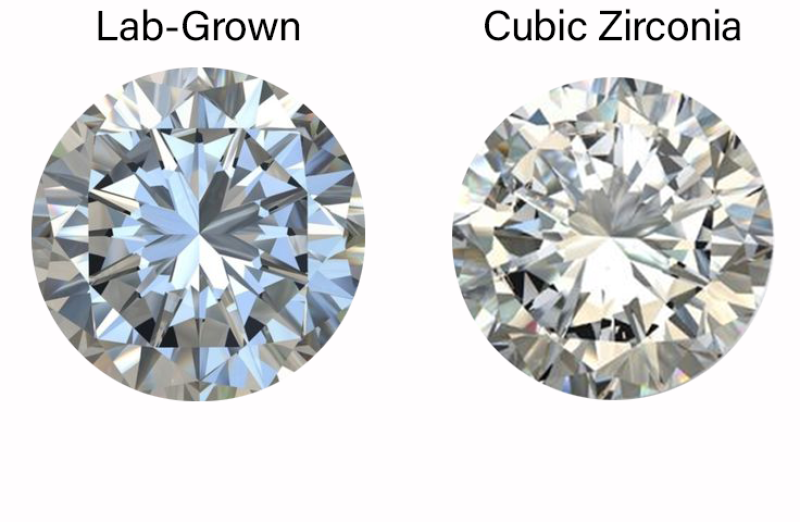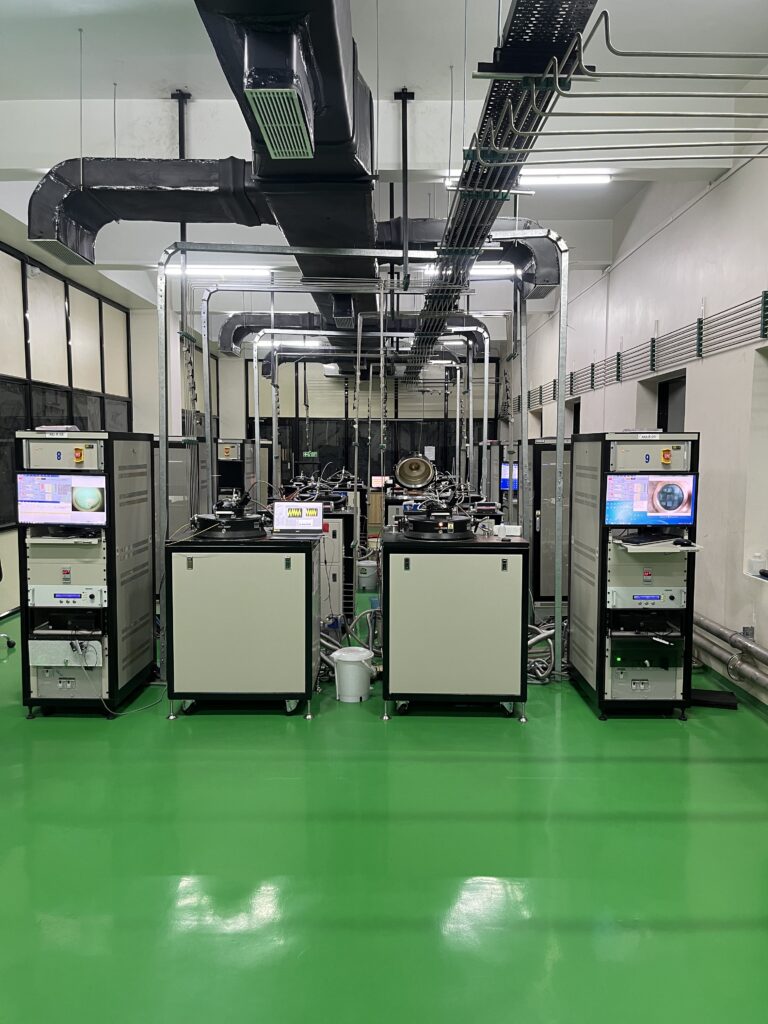Diamond Carat: Understand Diamond Weight and Its Influence on Size, Value, and Appearance
Understanding the Difference Between Cubic Zirconia and Lab-Grown Diamonds
When looking for a sparkling gemstone, you may come across Cubic Zirconia (CZ) and Lab-Grown Diamonds. While both are popular choices for jewelry, they are vastly different in composition, durability, and value. Understanding these differences will help you make an informed decision when selecting the perfect stone.
What is Cubic Zirconia?
Cubic Zirconia (CZ) is a synthetic gemstone made from zirconium dioxide (ZrO₂). It was developed in the 1970s as an affordable diamond simulant and has since become widely used in fashion jewelry.

Characteristics of Cubic Zirconia
- Not a Real Diamond: Unlike lab-grown diamonds, CZ is not made of carbon and does not have the same physical or chemical properties as diamonds.
- High Sparkle with Excessive Fire: CZ has a higher dispersion rate than diamonds, meaning it exhibits more colorful flashes, which can sometimes appear artificial.
- Soft and Prone to Scratches: With a hardness of 8–8.5 on the Mohs scale, CZ is much softer than diamonds and can scratch and dull over time
- No Resale Value: CZ is mass-produced, inexpensive, and holds no significant resale value
- Clouding and Wear Over Time: Unlike diamonds, CZ can become cloudy and lose its brilliance over prolonged use.
- Heat Sensitivity: CZ is more sensitive to heat compared to diamonds and may get damaged if exposed to high temperatures.
- Density and Weight: CZ is heavier than diamonds of the same size, which can sometimes make it noticeable in jewelry settings.
What Are Lab-Grown Diamonds?
Lab-grown diamonds are real diamonds, created using advanced scientific processes that mimic the natural diamond formation. They have the same physical, chemical, and optical properties as mined diamonds.
How Lab-Grown Diamonds Are Made
Lab-grown diamonds are produced using two primary methods:
- High-Pressure High-Temperature (HPHT): This method replicates the natural formation process by exposing carbon to high pressure and temperature.
- Chemical Vapor Deposition (CVD): This process grows diamond crystals by depositing carbon atoms onto a diamond seed in a controlled environment.
Advantages of Lab-Grown Diamonds
- 100% Real Diamonds: Unlike CZ, lab-grown diamonds have the exact same structure as natural diamonds.
- Superior Durability: With a hardness of 10 on the Mohs scale, lab-grown diamonds are the hardest known material, making them highly resistant to scratches and damage.
- Classic White Brilliance: They exhibit the same fire, scintillation, and brilliance as mined diamonds.
- Ethical and Sustainable: Lab-grown diamonds are conflict-free and have a lower environmental impact than mined diamonds.
- Better Long-Term Value: Unlike CZ, which has no resale value, lab-grown diamonds retain their worth over time.

Cubic Zirconia vs Lab-Grown Diamond
| Feature | Cubic Zirconia (CZ) | Lab-Grown Diamond |
|---|---|---|
| Composition | Zirconium dioxide (ZrO₂) | Pure carbon (C) |
| Brilliance & Sparkle | High dispersion, artificial rainbow flashes | Classic white brilliance and balanced sparkle |
| Hardness (Mohs Scale) | 8–8.5 (softer, prone to scratches) | 10 (extremely durable, scratch-resistant) |
| Refractive Index | 2.15–2.18 | 2.42 (same as natural diamonds) |
| Durability | Prone to scratches, dulling, and clouding | Highly durable, retains brilliance forever |
| Fire (Colored Light Dispersion) | High dispersion, unnatural flashes | Natural, well-balanced fire |
| Color & Clarity | Often colorless but can become cloudy over time | Available in various grades, including completely colorless (D grade) |
| Cost | Very inexpensive, widely available | Less expensive than natural diamonds but much more valuable than CZ |
| Ethical & Sustainable | Lab-created, but mass-produced | Lab-created, sustainable, and ethical |
| Resale Value | No resale value | Retains better value than CZ |
| Authenticity | Diamond simulant (not a real diamond) | 100% real diamond |
| Heat Sensitivity | Can be damaged by high heat | Resistant to extreme temperatures |
| Density | Heavier than diamonds | Same density as natural diamonds |
| Longevity | Becomes cloudy and dull over time | Retains its brilliance indefinitely |
Which One Should You Choose?
Why Lab-Grown Diamonds Are the Better Choice
- 100% real diamonds with identical properties to mined di
- Superior hardness and durability for lifelong wear.
- Ethical and sustainable with minimal environmental impact.
- Classic brilliance and fire without artificial rainbow effects.
- Better resale value compared to cubic zirconia.
- Resistant to clouding, scratches, and heat.
- Available in multiple color options for customization.
Final Thoughts: Cubic Zirconia vs. Lab-Grown Diamonds
While cubic zirconia may seem like a low-cost option for temporary jewelry, it does not compare to the quality, durability, and authenticity of lab-grown diamonds. Over time, CZ loses its brilliance and scratches easily, making it a short-term choice. In contrast, lab-grown diamonds offer the same beauty and strength as mined diamonds, making them a timeless and valuable investment.
At Anyra Diamonds, we specialize in high-quality lab-grown diamonds, providing the brilliance, strength, and prestige of real diamonds—at a fraction of the cost of mined diamonds. Explore our collection today and choose a diamond that lasts a lifetime!